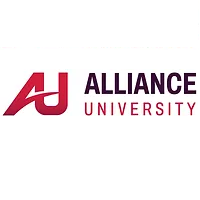Below is a summary of the abstract you submitted. Presenting author(s) is shown in bold.
If any changes need to be made, you can modify the abstract or change the authors.
You can also download a .docx version of this abstract.
If there are any problems, please email Dan at dar78@pitt.edu and he'll take care of them!
This abstract was last modified on May 2, 2019 at 9:31 p.m..

Isolation and characterization of non-mycobacterial actinobacteriophages continue to increase our knowledge about bacteriophage biology. This year at Nyack College we isolated a total of fifteen phages, which included eight Gordonia terrae phages, two Rhodococcus phages and five Microbacterium phages isolated using Microbacterium paroxydans and Microbacterium foliorum as hosts. One Microbacterium phage DizzyRudy (EL) and two Gordonia phages Ewald (DT) and MintFen (CV) were sequenced. Of these, DizzyRudy seemed to be particularly interesting as there are only 2 other members of the cluster, all having a minimum of 5 novel genes. DizzyRudy is 55, 815 bp with 89 genes, including several putative major tail genes and numerous predicted membrane proteins. The phage does not contain an immunity repressor or gene such as an integrase which would allow it to be maintained in the host cell as a prophage. No lysogens have been recovered.
Most bacteriophages have a narrow host range and typically only infect one bacterial host but some phages have a wider host range. Consequently, host range experiments were performed using several Microbacterium strains including M. chocolatum, M. testaceum, M. radiodurans, M. saperdae, M. ketosidreducens and M. arborescens to determine if any of our isolated bacteriophages were able to cross infect other species. MaeLinda which was isolated using M. foliorum was able to infect M. ketosidreducens with an efficiency of plating of 1. To understand this we performed phylogenetic analysis of these strains based on 16S rRNA sequences to determine the degree of relatedness to M. foliorum and the results will be presented.
To date, the nature of most receptors used for actinobacterial phage infections are not known and in addition, we do not understand why some bacteriophages have a wider host range. Therefore, understanding this will give us insight into bacteriophage – host interactions. The first step of bacteriophage infection of a host is recognition of a specific receptor which may be protein, carbohydrate or other cell membrane associated structures. To determine the type of receptors used by different bacteriophages, the results of ongoing experiments will be presented. Preliminary experiments have shown that the Gordonia phage Ewald(DT) has a reduced ability to infect the host bacteria in the presence of spermidine. Polyamines such as spermine and spermidine have been shown to block porins present in bacterial cell wall used by some phages as a port of entry into the cell. This result suggests that a porin is required for Ewald to infect Gordonia terrae. We will also present our results of experiments to identify specific bacterial receptors using transposon mutagenesis.

